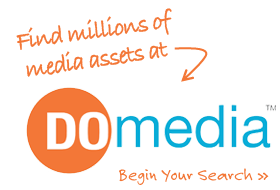 Here at DOmedia, we are working to change the way media is bought and sold. Part of that is eliminating digital labor. That’s a term we throw around a lot, and it may not be one you’re familiar with– but you’re almost certainly familiar with the concept.
Here at DOmedia, we are working to change the way media is bought and sold. Part of that is eliminating digital labor. That’s a term we throw around a lot, and it may not be one you’re familiar with– but you’re almost certainly familiar with the concept.
It’s a huge pain point among media planners, but it may not even be one you’re aware of. For some, the drudgery and inefficiency has become part of the job. But it doesn’t have to be! (Cue Apple “1985” commercial.)
In the out-of-home industry, digital labor is all of the email, spreadsheets, presentations, photos and other documents that are shared between buyers and sellers. Think about how many documents you receive and send out on a daily basis. In fact, we know how many! For a single RFP, media planners receive an average of 40 documents. That’s just for one RFP. It’s absurd!
Lest you think the issue only lies in the number of files, the rabbit hole goes deeper. Every vendor and agency has different formats for their spreadsheets, which value different pieces of information. That’s where the “labor” part comes in.
Digital labor involves interpreting, transcribing, consolidating, presenting and making decisions based on huge numbers of files with inconsistent information and formatting.
The Problems
This poses a few problems for agencies. The first is wasted time. The processes of digging through and interpreting inconsistent information now consumes the media planner’s job– leaving them less time to focus on finding the best media for a campaign.
The second symptom of digital labor is wasted talent. Consider the agency model- it works because it attracts the best and brightest talent. The creative team aren’t the only ones who need to be creative. It takes skill and insight to know how to deliver a great campaign. The job of media planners is value-added activities like developing campaign creative and strategy, not transcribing spreadsheets.
The third problem is that agencies have gotten used to digital labor. Leaders are dedicating time and resources to a process that sucks them away. Hiring managers are looking for spreadsheet ninjas over creativity and insight. Wasted time and wasted talent has become an natural part of agency life. That’s just a shame.
Don’t get me wrong, I appreciate a good VLOOKUP as much as the next nerd. But there is a better way, and there are greener pastures ahead.
The Solution
The answer, as it turns out, is very simple. Picture a world where media sellers and buyers work together with a unified data set for everything they need. Ratings, locations, demographics, RFPs– everything with its own standardized and structured set of data.
This means planners can interpret data better. But wait, there’s more! Suddenly, planners can use the full power of spreadsheets. Computers love to interpret data, so why not let them do their thing? Technology can move smoothly and quickly through standard sets of data, and relieve the burden of digital labor from media buyers.
Of course, creating such standards isn’t easy. When DOmedia set out to create a standard RFP format, some industry leaders said it was impossible. Today, however, the DOmedia RFP tool empowers top advertising agencies to move campaigns from concept to contract without rekeying data. Now, industry groups are working to develop standards for other parts of the OOH buying process.
For example, the Traffic Audit Bureau (TAB) has organized both supply and demand-side stakeholders to define the best way to measure and rate OOH media.
As more standards emerge, DOmedia will provide the technology that brings those decisions to life. DOmedia’s suite of tools for media buyers already features TAB data, our standardized RFP process, and an ever-growing list of vendors across the country. We work to defy the idea that digital labor is a natural consequence of technology. Computers should make our jobs easier, not more difficult. We’ll make that vision a reality by continuing to work together with industry leaders.




